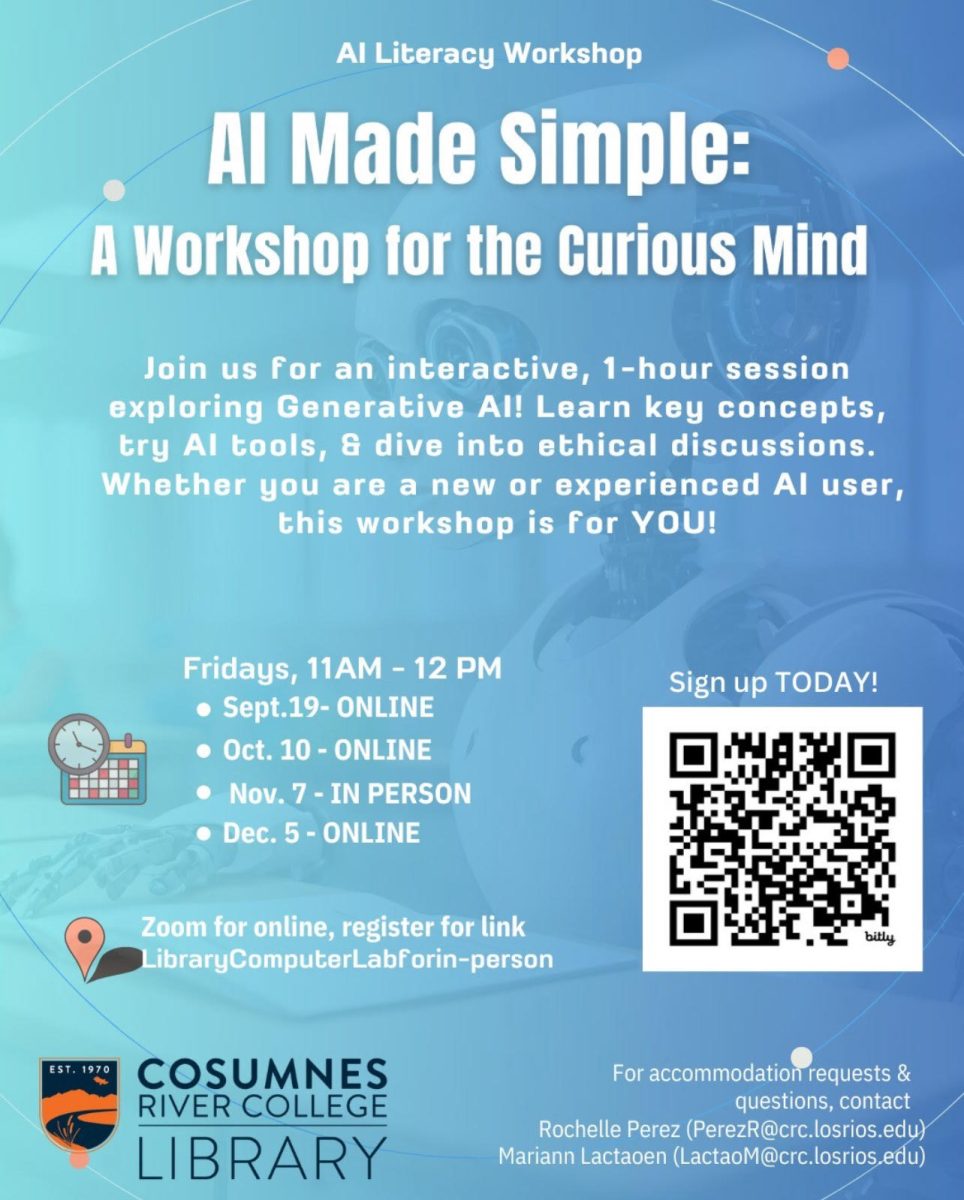Many campus faculty and staff attended a one-day training in August that focused on how artificial intelligence tools are being used on college campuses.
Artificial intelligence, or AI, “refers to computer systems that can perform complex tasks normally done by human-reasoning, decision making and creating,” according to NASA.
Many college campuses are now integrating AI tools, with a chatbot system similar to ChatGPT with learning platforms, such as Canvas, according to a recent article by the Associated Press.
Librarian Emily Bond was one of the presenters at the campus training and she shared information on exploring the challenges and opportunities with AI. Bond said she helps students with research in the library so she makes an effort to stay familiar with AI to see what tools are available for students.
“I focus on teaching AI literacy,” Bond said. “So, it’s the ability to think critically about how we engage with AI for information, and the information that’s created or output by AI.”
Bond wants students to understand how to responsibly use AI, as she can see AI tools being both positive and negative.
Greg Beyrer, the campus distance education coordinator and a history professor, said AI as a tool can be good or bad, it just depends on the student’s intent.
“It depends on what they’re learning and it depends on what we’re teaching,” said Beyrer, who presented an overview of generative AI at the campus training and how faculty could possibly use it.
Beyrer said he’s incorporating three chatbots into the way his classes are being run: one for course information, one for the textbook and one for all of the assignment instructions. Beyrer said the tool he uses for the chatbots is 3C Media.
“3C Media is a state chancellor’s supported technology grant for our system,” Beyrer said. “3C Media, the grant, is actually called Tech Connect. Tech Connect, they’re actually the ones who pay for Zoom.”
Beyrer has also used sites like NoteBookLM and PlayLab for their AI features. Beyrer said that he thinks the AI tools he uses are awesome because of the way they are structured.
“The information that feeds the chatbot is information we provide,” Beyrer said.
The information given when a student asks a question through the chatbot is going to be answered from textbooks and lectures, Beyrer added.
Beyrer said that AI tools are already available through the standard license for Canvas, such as discussion summaries and smart search through IgniteAI. Other features that are being developed are an inbox and course translation.
IgniteAI is the way Instructure, the company that created Canvas, is able to incorporate AI tools into Canvas, according to the Instructure website.
Beyrer said another way that Canvas can include AI in its structure is through a purchasable license called IgniteAI Agent, where the tool can act on the user’s behalf. Beyrer said he attended a conference in July where this information was discussed.
“They’re trying to limit the cost of running queries,” Beyrer said. “Everytime we use generative AI, there’s a cost for it.”
Whenever a user makes a request on an AI tool, the computers that search for data to compile the answer uses energy and resources, which are some of the costs that Beyrer mentioned.
Beyrer said the license for IgniteAI Agent will be decided by the school whether or not they want extra features on Canvas.
Fairuze Ramirez, a professor of English as a second language, said that she is neither for or against AI.
“There are strengths and limitations,” Ramirez said. “We all need to come together and have strategies for that.”
Ramirez shared information about using AI with her colleagues from a past workshop where she also spoke about academic integrity.
Ramirez said she stopped using apps like Turnitin because it would accuse her ESL students of plagiarism when they were given the same texts and the questions didn’t have many different ways to be answered.
“That’s what I worry about, especially with my historically marginalized students or students who have a tough life when it comes to being policed or feeling they don’t belong,” Ramirez said. “I had a tough decision to make and I decided that I wasn’t going to use it anymore.”

